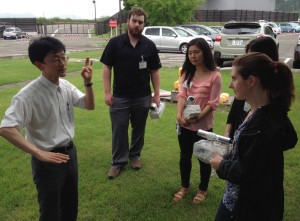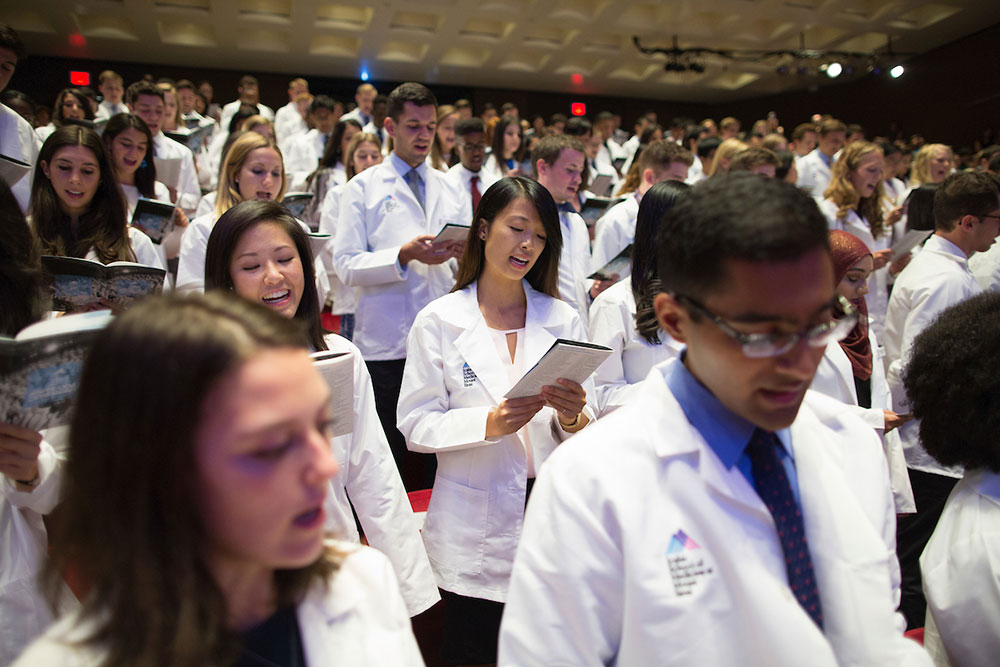 Last summer, I was lucky enough to spend two months in Fukushima, Japan and conduct research there as part of a project funded by the Arnhold Global Health Institute at Mount Sinai and Rotary International. During the first week, fellow Icahn School of Medicine at Mount Sinai (ISMMS) medical student David Anderson and I participated in a class at Fukushima Medical University on radiation and disaster medicine. After that, we conducted a survey along with Japanese medical students to examine post-traumatic stress and growth after the 3/11/11 “Triple Disaster” (earthquake, tsunami, and nuclear accident). The experience was incredible and the research is still ongoing!
Last summer, I was lucky enough to spend two months in Fukushima, Japan and conduct research there as part of a project funded by the Arnhold Global Health Institute at Mount Sinai and Rotary International. During the first week, fellow Icahn School of Medicine at Mount Sinai (ISMMS) medical student David Anderson and I participated in a class at Fukushima Medical University on radiation and disaster medicine. After that, we conducted a survey along with Japanese medical students to examine post-traumatic stress and growth after the 3/11/11 “Triple Disaster” (earthquake, tsunami, and nuclear accident). The experience was incredible and the research is still ongoing!
As soon as I arrived in Japan, I was struck by the order and precision. I saw it first in the smallest details: I was told to stand in a neatly defined yellow box while waiting for the airport bus. Three luggage attendants bowed in unison as the bus departed. It left at the exact time it was supposed to. Later that day, I wandered to the Ginza district in the heart of Tokyo and bought a delicious, albeit expensive, bento box. With its clear dividing lines, the bento box was a mirror of what I had seen earlier: smaller boxes within a larger one, with spaces for the individual portions of rice, meat, and pickled vegetables. Even within the smaller compartments, there were additional dividers in the form of wrappers for the sticky meatballs and peeled kiwi.
I thought back to my perfect Ginza bento box when I arrived in Fukushima City one day later. It seemed to me that the bento box encapsulated Japan with its order, regularity, and precision. I would soon learn how the March 2011 earthquake, tsunami, and nuclear disaster disrupted this order and destroyed these carefully demarcated lines, both literally and figuratively.
At a disaster medicine class at Fukushima Medical University, I learned about the extent of the physical damage caused by this “triple disaster” and the consequences for the affected residents. We traveled as a class to talk with community members at a health screening in the town of Kawamata. One man shared his wish that he could soon eat kuritake and nameko—wild mushrooms that grew in the mountains. Their radiation levels were currently too high, but he hoped one day that would change and he would be able to enjoy them again. I sang a duet of “Jingle Bells” with a woman who had learned the song from an English teacher in the fifties. It was late June—hardly the time for a Christmas song—but it felt uplifting to sing this American classic about snow and holiday cheer.
Later that same day, after leaving the health screening, we drove to Minami-Soma and visited one of the many devastated coastal areas. The tsunami had destroyed the road that ran parallel to the seawall, and we had to hike up the cracked asphalt to get to the beach. The ocean was calm that afternoon, and it was hard to imagine that those same waves gently breaking on the beach had been the cause of such havoc. We stopped to see houses that were half-destroyed, with personal items like slippers stuck in the mud along with fishing line and piles of seaweed.
Continued in Part 2.
 Phoebe Prioleau is an MD/MPH Candidate, Class of 2017
Phoebe Prioleau is an MD/MPH Candidate, Class of 2017












